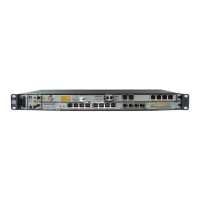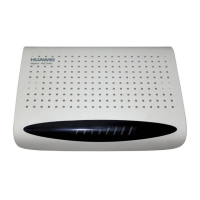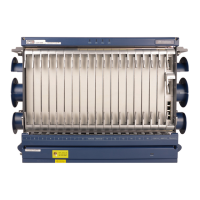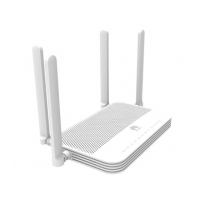23
4
Checking Power Supply Before Power-On
If the voltage of the power supply does not meet the requirements, do not power on the equipment.
Check the voltage of the external power supply.
Chassis Type Standard Voltage of the Input Power Supply Allowed Voltage Range
DC power-supply chassis -48V/-60V -40 V to -72 V
According to the FOA installation list, check whether FOAs are installed.
Check the fuse capacity of the external power supply.
Chassis Type Maximum Power Consumption
DC power-supply chassis ≥ 32 A (recommended for capacity expansion ≥ 40 A)
Check the value of the first power cabinet fuse capacity.
The maximum operating current of a single channel is 40 A, the value of the first power cabinet fuse capacity is
recommended as ≥32 A (recommended for capacity expansion ≥ 40 A).
Mapping the first power cabinet circuit breaker (fuse) to the device (subrack) is recommended. To be specific, a
channel of power sent by a circuit breaker of the first power cabinet can be connected to only one device. If a
channel of power sent by a circuit breaker of the first power cabinet is connected to multiple devices, when a
traffic error occurs on one device, the circuit breaker may take protection measures, causing multiple devices to
be powered off.
• 2. Before connecting to the optical module, use an optical power meter to measure the receive optical power (P). If P is
less than -4 dB, the optical module can be directly connected. If P is greater than -4 dB, add an optical attenuator at the
receive end to ensure that the receive optical power is less than -4 dB. Alternatively, add an optical attenuator (no less
than 10 dB is recommended) before the interconnection, and then adjust the optical attenuator based on the site
requirements to prevent the optical module from being damaged.
• 3. If a loopback occurs on the pigtail of the optical module or the optical module is connected for a short distance, an
optical attenuator must be added. It is recommended that the optical attenuator be no less than 10 dB.
3
Checking Optical Link
Since the 50G optical module link uses the PAM4 encoding technology, the link is more sensitive to multipath reflection
interference of signals. If the fiber link connector, fiber section, or fiber splicing surface is dirty, optical signals are reflected
back and forth on the fiber link, causing interference due to co-channel noise on the receive side. As a result, the optical
link is unstable or intermittently disconnected.
Before installing the 50G optical module, you are advised to use an OTDR meter to check the optical link. The check
method is as follows:
Remove optical
modules from
both sides and
remove optical
fibers.
Check the receive and
transmit end faces of
the optical module
using the fiberscope.
Check the pugtail
end face using the
fiberscope.
Check the optical path
insertion loss and
reflection using the
OTDR tester.
If dirty substances
exist, use the
cleaning tool.
If dirty substances
exist, use the
cleaning tool.
Process the segment
based on the check
result.
Because the transmit optical power of the OTDR meter is much higher than the damaged optical power threshold at the
receive end, the optical fiber must be removed from the optical module when the OTDR meter is used to test the optical
path quality.

